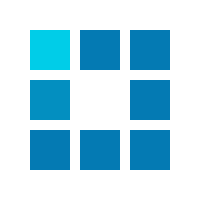Methodology
Adaptable to the size, complexity and needs of any organization, the organization design process consists of the following steps;
1. Charter the design process
As senior leaders, you come together to discuss current business results, organizational health, environmental demands, etc. and the need to embark on such a process. You establish a charter for the design process that includes a “case for change,” desired outcomes, scope, allocation of resources, time deadlines, participation, communications strategy, and other parameters that will guide the project.
(At times, senior teams may go through either a strategic planning process or an executive team development process prior to beginning a redesign initiative, depending on how clear they are about their strategy and how well they work together as a team.)
2. Assess the current state of the business
You don’t want to begin making changes until you have a good understanding of the current organization. Using our Transformation Model, we facilitate a comprehensive assessment of your organization to understand how it functions, its strengths and weaknesses, and alignment to your core ideology and business strategy. The assessment process is astounding in the clarity it brings an organization’s leaders and members, not only regarding how the organization currently works but how the various parts are interrelated, its overall state of health and, most importantly, what needs to be done to make improvements.
3. Design the new organization
The senior team (and/or others who have been invited to participate in the process), look to the future and develop a complete set of design recommendations for the “ideal future.” At a high level, the steps in this process include the following:
- Defining your basic organizing principle. (Will you organize primarily around functions, processes, customer-types, technologies, geographies, etc.?)
- Streamlining core business processes—those that result in revenue and/or deliverables to customers.
- Documenting and standardizing procedures.
- Organizing people around core processes. Identifying headcount necessary to do core work.
- Defining tasks, functions, and skills. What are the performance metrics for each function/team? How are they evaluated and held accountable?
- Determining facility, layout and equipment needs of various teams and departments throughout the organization.
- Identifying support resources (finance, sales, HR, etc.), mission, staffing, etc. and where should these should be located.
- Defining the management structure that provides strategic, coordinating and operational support.
- Improving coordinating and development systems (hiring, training, compensation, information-sharing, goal-setting, etc.).
At some point the design process morphs into transition planning as critical implementation dates are set and specific, concrete action plans created to implement the new design. And a key part of this step includes communicating progress to other members of the organization. A communications plan is developed that educates people in what is happening. Education brings awareness, and everyone’s inclusion brings the beginning of commitment.
4. Implement the design
Now the task is to make the design live. People are organized into natural work groups which receive training in the new design, team skills and start-up team building. New work roles are learned and new relationships within and without the unit are established. Equipment and facilities are rearranged. Reward systems, performance systems, information sharing, decision-making and management systems are changed and adjusted. Some of this can be accomplished quickly. Some may require more detail and be implemented over a longer period of time.
